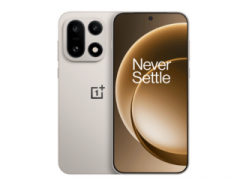- Home
- Cameras
- Cameras News
- Nikon D800 The 36 Megapixel Monster
Nikon D800 - The 36 Megapixel Monster
By Swapnil Mathur | Updated: 5 June 2012 01:02 IST

Click Here to Add Gadgets360 As A Trusted Source

Advertisement
Nikon Imaging Corp announced the much awaited Nikon D800, the newest in the line of full frame offerings from Nikon. The D800 incorporates a 36.3 megapixel (7360 x 4912 resolution) full frame sensor, invading the classic medium format territory, at least on paper. The D800 also employs a unique 910,000 RGB matrix metering mode coupled up with a 51 point AF system to meet the demanding standards of commercial photography.
The humongous pixel count is supplemented by video recording at full HD resolution (1920x1080 at 30, 25 and 24 fps) and 720p (1280x720 at 60, 50, 30 and 25 fps). Introducing a first of its kind in DSLR video, the D800 comes with the ability to stream uncompressed video footage through the included HDMI port onto a recording device, a feature that would have a large appeal to the film makers across the board.
Another key improvement to the D800 is the 51-point Autofocus system taken straight out of its big brother, the Nikon D4. In earlier models, the cross type sensitivity of the focusing points was limited to lenses with a maximum aperture of f/5.6, which made things hard for wildlife photographers if they were shooting with a super telephoto lens mounted on a teleconverter, leading to aperture numbers higher than f/5.6. The improved AF system of the D800 allows cross type sensitivity up to f/8 for the center focus point while lenses of apertures f/2.8 and faster can utilize the full spectrum of the 51 cross type points through any of the six unique area modes (single point, 9-point, 21-point, 51-point, auto area and continuous)
Photographers have long complained about the low pass filter that is placed atop the sensor in DSLRs. The purpose of this filter is to remove moire artifact from images, which it does by slightly blurring the image at a pixel level, leading to a decline in overall image sharpness. Nikon addresses this issue by simultaneously announcing the D800E, different from the D800 only in regards to the fact that it comes without a stock low pass filter on top of the sensor.
Other note-worthy features include an on board USB 3.0 port (another first for DSLR), dual memory card slots (CF and SD), weather sealing and two custom function buttons at the front of the camera that can be mapped to any range of functions. The D800 is a made of the standard magnesium-alloy material to give it a robust build.
The D800 will be available in the US sometime in late March 2012 for an estimated retail price of $2999.95 while the D800E will be made available mid-April for an estimated retail price of $3299.95
The humongous pixel count is supplemented by video recording at full HD resolution (1920x1080 at 30, 25 and 24 fps) and 720p (1280x720 at 60, 50, 30 and 25 fps). Introducing a first of its kind in DSLR video, the D800 comes with the ability to stream uncompressed video footage through the included HDMI port onto a recording device, a feature that would have a large appeal to the film makers across the board.
Another key improvement to the D800 is the 51-point Autofocus system taken straight out of its big brother, the Nikon D4. In earlier models, the cross type sensitivity of the focusing points was limited to lenses with a maximum aperture of f/5.6, which made things hard for wildlife photographers if they were shooting with a super telephoto lens mounted on a teleconverter, leading to aperture numbers higher than f/5.6. The improved AF system of the D800 allows cross type sensitivity up to f/8 for the center focus point while lenses of apertures f/2.8 and faster can utilize the full spectrum of the 51 cross type points through any of the six unique area modes (single point, 9-point, 21-point, 51-point, auto area and continuous)
Photographers have long complained about the low pass filter that is placed atop the sensor in DSLRs. The purpose of this filter is to remove moire artifact from images, which it does by slightly blurring the image at a pixel level, leading to a decline in overall image sharpness. Nikon addresses this issue by simultaneously announcing the D800E, different from the D800 only in regards to the fact that it comes without a stock low pass filter on top of the sensor.
Other note-worthy features include an on board USB 3.0 port (another first for DSLR), dual memory card slots (CF and SD), weather sealing and two custom function buttons at the front of the camera that can be mapped to any range of functions. The D800 is a made of the standard magnesium-alloy material to give it a robust build.
The D800 will be available in the US sometime in late March 2012 for an estimated retail price of $2999.95 while the D800E will be made available mid-April for an estimated retail price of $3299.95
Comments
Get your daily dose of tech news, reviews, and insights, in under 80 characters on Gadgets 360 Turbo. Connect with fellow tech lovers on our Forum. Follow us on X, Facebook, WhatsApp, Threads and Google News for instant updates. Catch all the action on our YouTube channel.
Further reading:
camera, d4, d800, full frame, imaging, megapixel, nikon, pixels, resolution, sharpness
Related Stories
Popular on Gadgets
- Samsung Galaxy Unpacked 2025
- ChatGPT
- Redmi Note 14 Pro+
- iPhone 16
- Apple Vision Pro
- Oneplus 12
- OnePlus Nord CE 3 Lite 5G
- iPhone 13
- Xiaomi 14 Pro
- Oppo Find N3
- Tecno Spark Go (2023)
- Realme V30
- Best Phones Under 25000
- Samsung Galaxy S24 Series
- Cryptocurrency
- iQoo 12
- Samsung Galaxy S24 Ultra
- Giottus
- Samsung Galaxy Z Flip 5
- Apple 'Scary Fast'
- Housefull 5
- GoPro Hero 12 Black Review
- Invincible Season 2
- JioGlass
- HD Ready TV
- Laptop Under 50000
- Smartwatch Under 10000
- Latest Mobile Phones
- Compare Phones
Latest Gadgets
- Lava Agni 4
- Wobble One
- OPPO Reno 15 Pro
- OPPO Reno 15
- Vivo Y500 Pro
- Realme GT 8 Pro Aston Martin F1 Limited Edition
- Huawei Mate 70 Air
- Moto G57
- Asus ProArt P16
- MacBook Pro 14-inch (M5, 2025)
- iQOO Pad 5e
- OPPO Pad 5
- Fastrack Revoltt FR2 Pro
- Fastrack Super
- Acerpure Nitro Z Series 100-inch QLED TV
- Samsung 43 Inch LED Ultra HD (4K) Smart TV (UA43UE81AFULXL)
- Asus ROG Ally
- Nintendo Switch Lite
- Haier 1.6 Ton 5 Star Inverter Split AC (HSU19G-MZAID5BN-INV)
- Haier 1.6 Ton 5 Star Inverter Split AC (HSU19G-MZAIM5BN-INV)
© Copyright Red Pixels Ventures Limited 2025. All rights reserved.

















